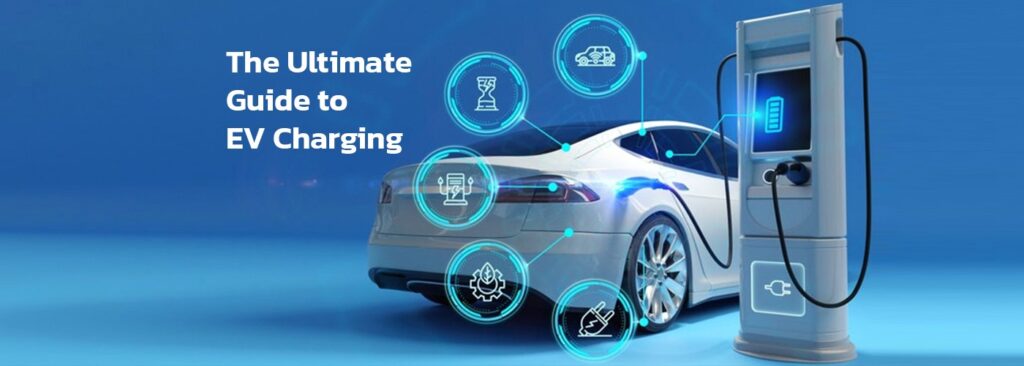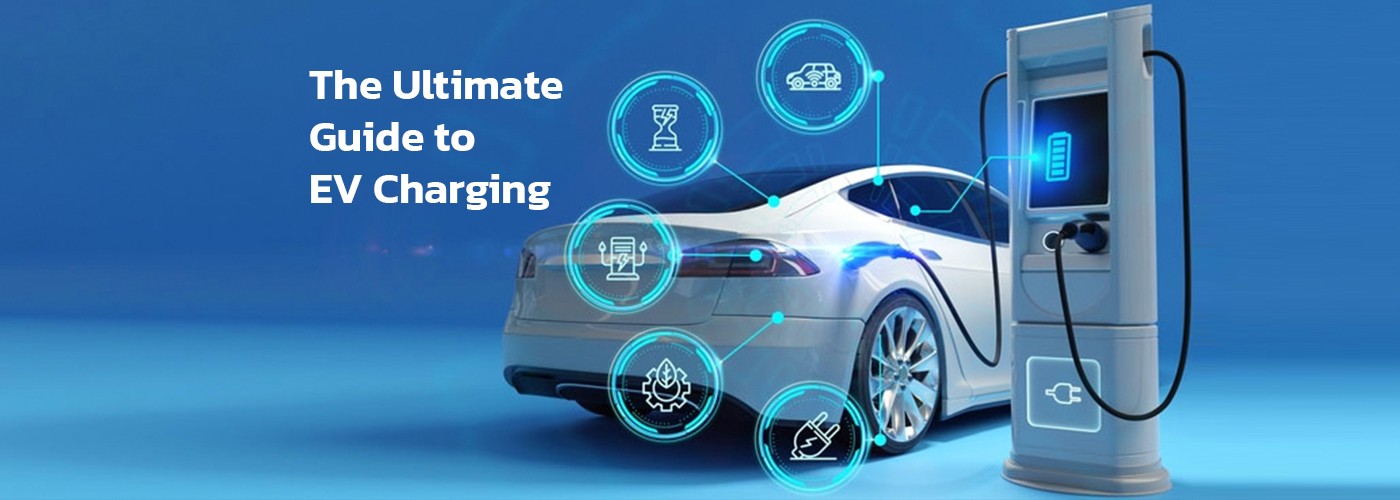
With the rapid adoption of electric vehicles (EVs) in India, understanding how and where to charge your EV is essential. This EV charging guide for India (2025) covers everything from charging types and infrastructure to apps and home setups—helping you power up smartly, safely, and affordably.
1. Types of EV Charging in India
- Level 1 (Slow Charging): Standard 3-pin AC sockets (2.5–3 kW); takes 8–12 hours for a full charge. Ideal for overnight home charging.
- Level 2 (Fast AC Charging): Wallbox or AC public chargers (7–22 kW); 3–5 hours for full charge. Suitable for both homes and commercial setups.
- DC Fast Charging (Level 3): Public DC chargers (30–150 kW or more); 0–80% in 30–60 minutes. Used in highways, malls, and city hubs.
2. Charging Connector Types in India
- CCS2 (Combined Charging System): Most common DC fast charging standard in India. Used by Tata, MG, Hyundai, Mahindra, etc.
- Type 2 AC: Standard AC charging port for most modern EVs.
- CHAdeMO: Rare in India; used by a few imported Japanese EVs.
- GB/T: Legacy standard mostly used by electric buses and some older EVs.
3. Public Charging Infrastructure in India (2025)
India has over 15,000 public EV charging stations (and growing). Key cities like Delhi, Mumbai, Bangalore, Pune, and Hyderabad are seeing rapid infrastructure expansion.
Popular charging networks:
- Tata Power EZ Charge
- Jio-bp Pulse
- ChargeZone
- Ather Grid
- Zeon Charging (South India)
4. EV Charging Apps in India
Use these apps to find nearby chargers, check availability, start sessions, and pay online:
- Tata Power EZ Charge App
- Pulse by Jio-bp
- ChargeGrid by Magenta
- EV Plugs (aggregator app)
- Google Maps (shows charger locations and reviews)
5. Setting Up EV Charging at Home
Most EV owners prefer home charging for daily convenience. You can install a 7.2 kW wallbox charger through your EV dealer or a certified installer. Expect to pay ₹40,000–₹80,000 including installation.
Ensure you have a proper earthing system and a dedicated power line to avoid overload or fire risk.
6. Charging Costs & Billing
- Home charging: ₹4–₹8 per unit (kWh) depending on state electricity rates
- Public charging: ₹15–₹25 per kWh for fast charging (plus GST)
- Subscription plans and prepaid cards are available for frequent users
7. Future of EV Charging in India
The Indian government aims to install 70,000+ charging stations by 2030. Faster chargers, solar-powered stations, and battery swapping tech are on the rise. The future is bright—and electric.
AC vs DC power
So, the higher the level, the faster the charging speed. All clear so far, right? But what exactly are AC and DC? When is something classified as AC and when as DC, and why is DC so much quicker?
AC vs DC current
AC stands for “Alternating Current,” which, as the name suggests, changes direction periodically. DC stands for “Direct Current” and flows in a straight line. Without diving too deep into the technicalities, AC can be transmitted over long distances more efficiently, which is why it comes from the outlets in your home and office. However, batteries can only store DC power, and electronics operate using DC.
Guidelines
On January 14, 2022, the Ministry of Power released updated consolidated guidelines and standards for electric vehicle charging infrastructure. The aim of this initiative is to promote the quicker adoption of electric vehicles in India by providing a safe, reliable, accessible, and affordable EV charging infrastructure and ecosystem.
Key Highlights of the Guidelines and Standards
- Owners are allowed to charge their electric vehicles at home and at their workplaces using their current electricity connections.
- The compliance requirements for public EV charging stations have been thoroughly clarified.
- Connections for public EV charging stations will be established within 7 days in metropolitan areas, 15 days in other municipal regions, and 30 days in rural locations.
- The state governments will determine the maximum Service Charges that can be levied by these charging stations.
- The electricity tariff for public EV charging stations will be a single-part tariff and will not exceed the ‘average cost of supply’ until March 31, 2025.
- Public EV charging stations or a network of such stations can procure electricity from any power generation company through open access.
- The Bureau of Energy Efficiency (BEE) will create and manage a national online database of all public EV charging stations in collaboration with State Nodal Agencies.
- Public EV charging stations must partner with at least one online Network Service Provider to facilitate advance remote or online booking of charging slots for EV owners.
- There will be at least one EV charging station available within a grid of 3 Km x 3 Km. Additionally, one EV charging station will be established every 25 Km on both sides of highways or roads.
- The guidelines envision a phased installation of EV charging infrastructure for major cities and large urban areas. Government of India

